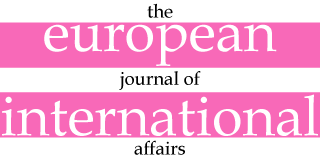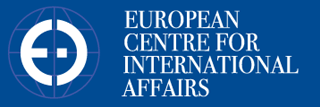Submissions
Guidelines for Contributors
Submission
Although many articles are commissioned, unsolicited articles are welcomed. Articles should be original and should not be under consideration elsewhere. The requested language is English. The articles should be submitted to the editor (editor@european-journal.org) in a Word document with an abstract summarizing the main points of the article and a note about the author. No responsibility is taken for damages or loss of articles submitted. Submissions will initially be screened at the editorial office, prior to reviewing, and authors will be informed if a article appears unsuitable for publication in the Journal.
File Format and Style
The preferred format is Microsoft Word. The file should be typed following the on-line style of the Journal. The article should be submitted in English. The text and references should be checked thoroughly for errors before submission. It is the responsibility of the author to ensure that the typescript is correct in style, syntax and spelling (Shorter Oxford English Dictionary). However, a Language Editor of the Journal will ceck the correctness. Should the English be incorrect, the article will be sent back to the author for mother tongue translation.
Article Structure
The first page of the article should come with the following information:
a) full title of paper, date;
b) author’s full name, affiliation, full postal address, telephone and fax numbers, e-mail address; the corresponding author who will be responsible for correspondence and correcting of revisions has to be evidenced;
c) abstract (100-150 words): the abstract should not contain any formulae or references;
d) the article should be subdivided into sections and subsections as necessary;
e) table and figures should be numbered consecutively and placed on separate sheets, with an indication in the text as to their appropriate placement;
f) a biography (50-100 words) of each author containing: studies background, professional occupation, research interests and recent publications, should be sent on separate sheets.
Illustrations
Normally the illustrations are provided by the editorial office in order to respect the graphical style of the Journal. However, illustrations can be submitted with the proposed article. They should supplied on a separate page at the end of the article with the indication on where in the text they should be positioned. The captions should be typed under the illustrations.
Tables
Tables have to be submitted when strictly necessary. They should be numbered and headed with short titles. They should be typed on separate sheets at the end of the article. Tables should not repeat data that are available elsewhere in the paper, e.g. in a line drawing. Creek letters and unusual symbols should be avoided if possible. Simple notation is encouraged.
References in the Text
References cited in the text should read as Brown (1975) or Brown and Smith (1975, 1980). Use “et al.” when citing a work by more than two authors, e.g. Brown et al. (1981). The letters a, b, c, etc should be used to distinguish citations of different works by the same author in the same year, e.g. Brown (1975a, b). When citing a new edition of a previously published work, include both dates, e.g. Durkheim (1912/1976), in text and references. If author’s name is not in the text, insert last name, comma and year, e.g. (Van Dijk, 1998). Enclose within a single pair of parentheses a se-ries of references, separated by semicolons, e.g. (Black and Williams, 1986; Downey and Jones, 1985; Perry, 1977). Use also parentheses to insert any brief phrase associated with the reference, e.g. (but see Jones, 1990, pp.123-4). For an institutional authorship, supply the minimum citation from the beginning of the complete reference, e.g. (US Bureau of the Census, 1994, p.36). Acronyms should be spelt out in full when used for the first time.
Endnotes
Being the Journal an on-line publication, endnotes should be kept to the minimoum amount possible and to manageable proportions. The endnotes should be presented in a list at the end of the article.
Revisions
A revisioned copy of the article will be sent to the corresponding email of the author for correction after editorial revision. This must be corrected following the editorial revisions and returned as soon as possible to the mail of the editor.
“Off prints” and web access
An electronic version (pdf) of the traditional “off-prints” will be supplied free of charge to each author of published articles as well as a free access to the Journal restricted area.
Plagiarism
In regard to submissions, the responsibility to avoid plagiarism falls squarely upon the shoulders of authors. It is always important to ensure that any material that has been gathered from another source, regardless of the source language, including newspapers, online articles, and unpublished papers or conferences is properly paraphrased or cited. Plagiarism, whether intentional or otherwise, thanks to the use of appropriate software will definitely be discovered.
Copyright
The Copyright Agreement form will be sent to the authors of submitted articles prior to refereeing and therefore has to be signed and returned to the Journal before the file can be processed. It is the author’s responsibility to obtain written permission to reproduce copyright material. Copyright for published papers will be vested in the publisher.
For further information please contact the Editorial Office at journal@european-centre.org





